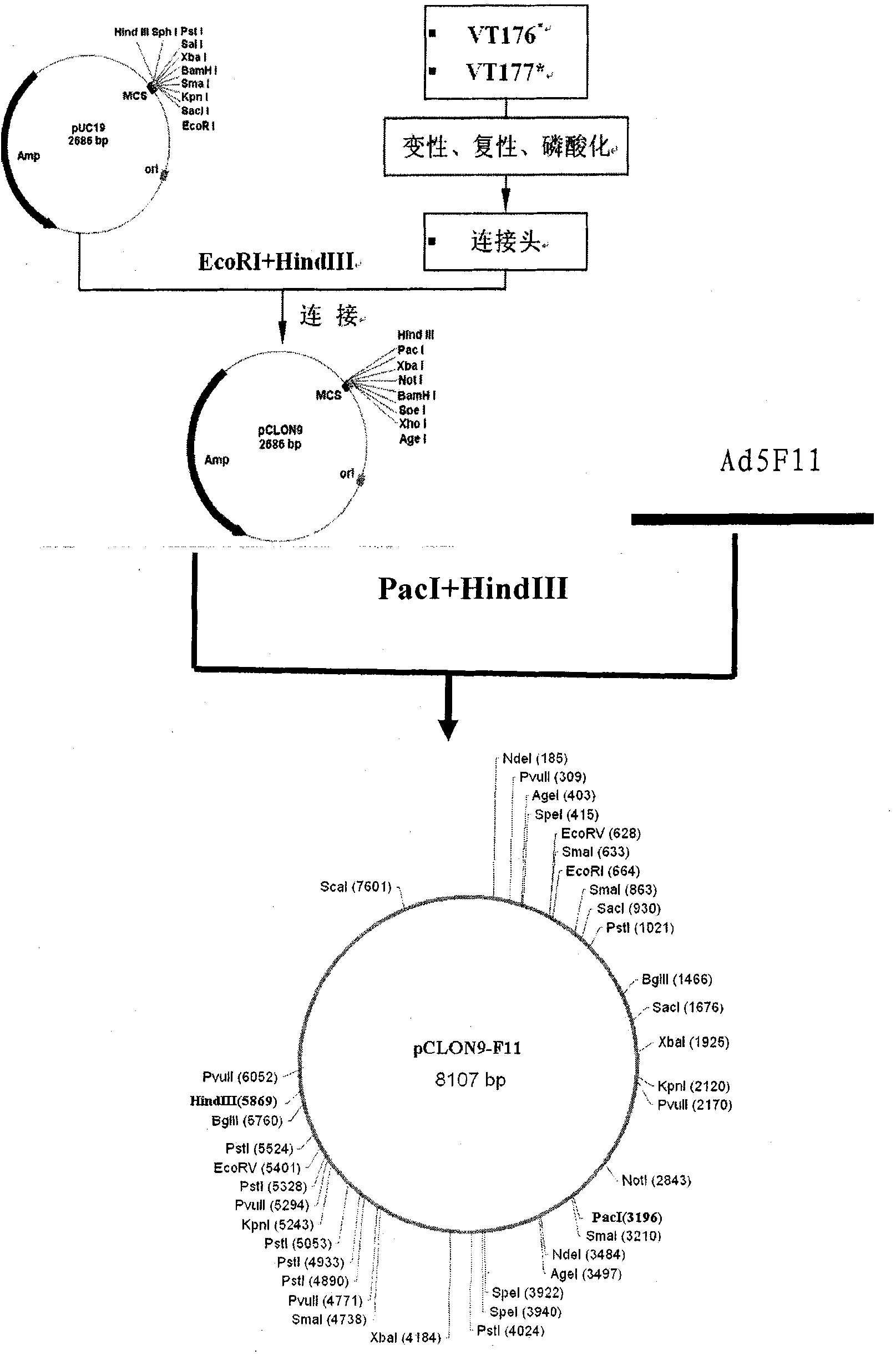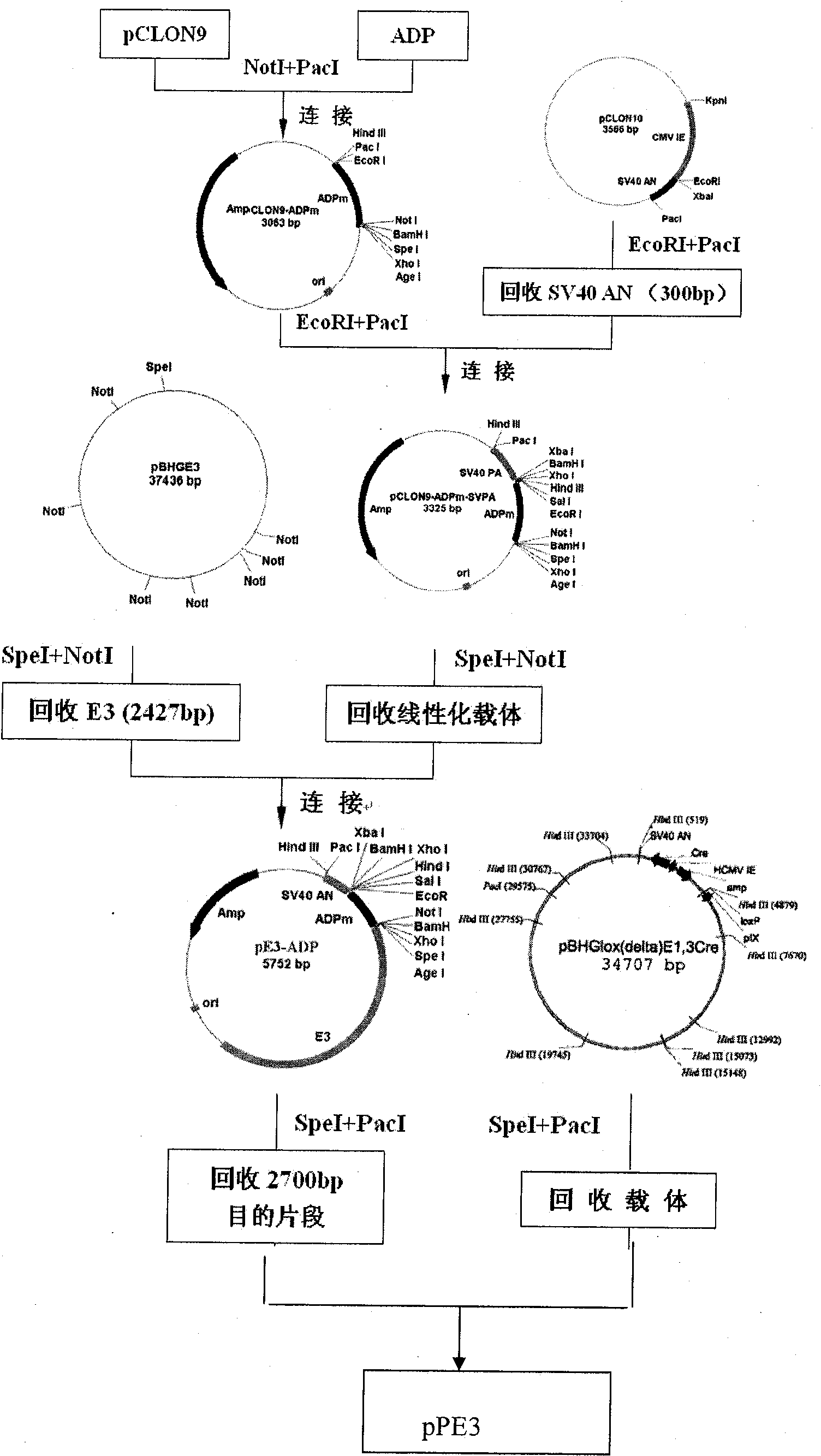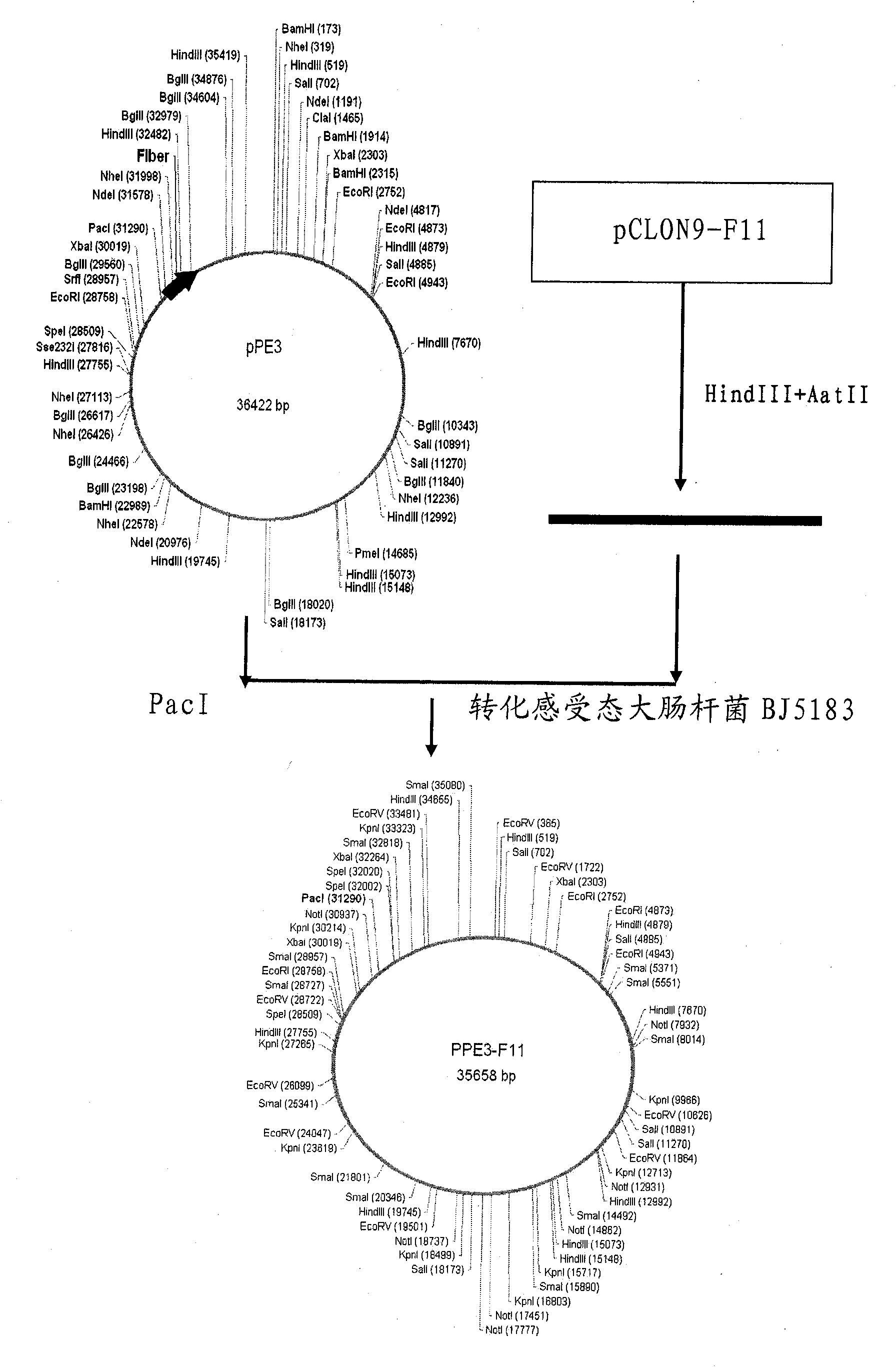Proliferous type recombination oncolytic adenovirus containing 11-type adenovirus cilia protein gene, construction method and application thereof
An oncolytic adenovirus and virus proliferation technology, applied in the fields of genetic engineering and virology, can solve the problems of short time, strong immunogenicity and poor clinical efficacy of foreign genes
- Summary
- Abstract
- Description
- Claims
- Application Information
AI Technical Summary
Problems solved by technology
Method used
Image
Examples
Embodiment 1
[0049] Example 1: Construction of the adenoviral vector pCLON9-F11 containing the coding sequence of the ciliary protein gene of type 11 adenovirus
[0050] Step 1: Synthesize the coding sequence of the ciliary protein gene containing adenovirus type 11 as shown in SEQ ID NO: 3, named Ad5F11, wherein: (1) bases 236-369: the coding sequence of the ciliary tail protein of adenovirus type 5; (2) Bases 367-1216: coding sequence of adenovirus type 11 cilium shaft and knob protein; (3) Other bases: genome sequence of type 5 adenovirus, see pBHGloxdeltaE1, 3Cre sequence of Microbix Biosystems.
[0051] Step 2: Synthesize the VT176 sequence (SEQ ID NO: 4) and the VT177 sequence (SEQ ID NO: 5) to construct the pCLON9 vector. The Ad5F11 sequence was digested with PacI+HindIII, and a 2656bp fragment was recovered, which was ligated with the pCLON9 / PacI+HindIII digested vector to construct pCLON9-F11, which was confirmed by enzyme digestion and sequencing. Build steps like figure 1 show...
Embodiment 2
[0052] Example 2: Homologous recombination in BJ5183 cells
[0053] Step 1: pCLON9-F11 was digested with HindIII+AatII, and a 5913bp fragment was recovered.
[0054] Step 2: Synthesize ADP sequence (SEQ ID NO: 6), such as figure 2 As shown, the adenovirus packaging plasmid pPE3 was constructed.
[0055] Step 3: The pPE3 vector is digested with PacI to recover the linearized vector. 4 microliters of pCLON9-F11 / HindIII+AatII and 2 microliters of pPE3 / PacI were used to co-transform competent Escherichia coli BJ5183 (Qbiogene). Plate culture, pick clones for enzyme digestion and identification, the correct one is named pPE3-F11, the large sample plasmid is extracted and purified, and stored in a deep low temperature refrigerator. The construction process of pPE3-F11 is as follows: image 3 shown.
Embodiment 3
[0056] Embodiment 3: Infectivity experiment of adenovirus containing Ad11 adenovirus ciliary protein gene to cultured cells in vitro
[0057] The first step: use human telomerase reverse transcriptase (hTERT) promoter to control type 5 adenovirus E1a, insert site NotI+SwaI, and construct adenovirus vector pQW-hTERT-Ep-HRE (see: patent ZL028138198, a Viruses specifically proliferating in tumor cells highly expressing anti-cancer genes and uses thereof; now renamed as pSG502). The hTERT promoter regulates the E1a gene, and the human hypoxia response element (HRE) regulates the E1b region gene (E1b-55kDa and E1b-19kDa genes). The core sequence of the hTERT promoter is shown in SEQ ID NO: 7, and the HRE sequence of the hypoxia response element is shown in SEQ ID NO: 8.
[0058] The second step: the EGFP gene (SEQ ID NO: 9) was inserted into pSG502 to construct pSG502-EGFP, and the insertion site of EGFP was EcoRI+SalI.
[0059] The second step: the adenovirus plasmid pSG502-EGFP...
PUM
| Property | Measurement | Unit |
|---|---|---|
| Titer | aaaaa | aaaaa |
Abstract
Description
Claims
Application Information
 Login to View More
Login to View More - R&D
- Intellectual Property
- Life Sciences
- Materials
- Tech Scout
- Unparalleled Data Quality
- Higher Quality Content
- 60% Fewer Hallucinations
Browse by: Latest US Patents, China's latest patents, Technical Efficacy Thesaurus, Application Domain, Technology Topic, Popular Technical Reports.
© 2025 PatSnap. All rights reserved.Legal|Privacy policy|Modern Slavery Act Transparency Statement|Sitemap|About US| Contact US: help@patsnap.com



